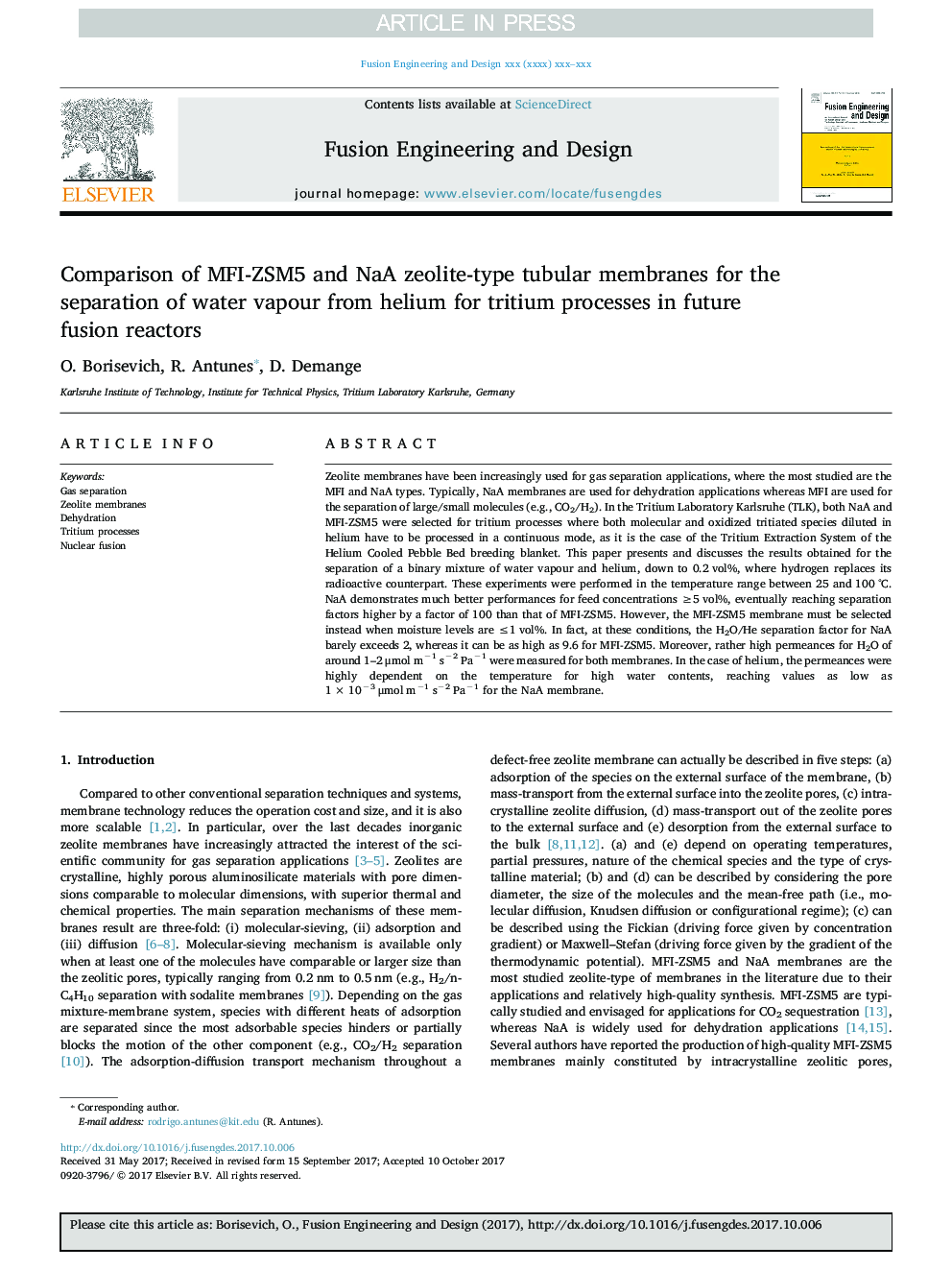| Article ID | Journal | Published Year | Pages | File Type |
|---|---|---|---|---|
| 6743803 | Fusion Engineering and Design | 2017 | 5 Pages |
Abstract
Zeolite membranes have been increasingly used for gas separation applications, where the most studied are the MFI and NaA types. Typically, NaA membranes are used for dehydration applications whereas MFI are used for the separation of large/small molecules (e.g., CO2/H2). In the Tritium Laboratory Karlsruhe (TLK), both NaA and MFI-ZSM5 were selected for tritium processes where both molecular and oxidized tritiated species diluted in helium have to be processed in a continuous mode, as it is the case of the Tritium Extraction System of the Helium Cooled Pebble Bed breeding blanket. This paper presents and discusses the results obtained for the separation of a binary mixture of water vapour and helium, down to 0.2 vol%, where hydrogen replaces its radioactive counterpart. These experiments were performed in the temperature range between 25 and 100 °C. NaA demonstrates much better performances for feed concentrations â¥5 vol%, eventually reaching separation factors higher by a factor of 100 than that of MFI-ZSM5. However, the MFI-ZSM5 membrane must be selected instead when moisture levels are â¤1 vol%. In fact, at these conditions, the H2O/He separation factor for NaA barely exceeds 2, whereas it can be as high as 9.6 for MFI-ZSM5. Moreover, rather high permeances for H2O of around 1-2 μmol mâ1 sâ2 Paâ1 were measured for both membranes. In the case of helium, the permeances were highly dependent on the temperature for high water contents, reaching values as low as 1 Ã 10â3 μmol mâ1 sâ2 Paâ1 for the NaA membrane.
Related Topics
Physical Sciences and Engineering
Energy
Energy Engineering and Power Technology
Authors
O. Borisevich, R. Antunes, D. Demange,
